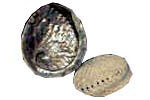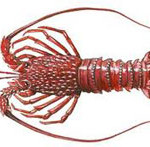
Epinephulus spp.
When people talk about coral reefs, fishermen tend to shrug their shoulders and complain about snagged lines and torn nets. But when you talk about groupers, they suddenly sit up and pay attention. Groupers are among the economicallymost important fishes of the coral reef, because of their popularity as food. Yetwithout the coral reef there would probably be no groupers. For this reason, groupers are an extremely important indicator species and your record of theirexistence or non-existence during your dive tells us a lot.
The Goliath Grouper (Epinephelus itajara), sometimes called the jewfish, is classified as critically endangered on the IUCN Red List. Found in shallow, inshore waters to depths of 45m, this indicator prefers areas of rock, coral, and mud bottoms. The jewfish is notable as one of the few groupers found in brackish waters. Strikingly patterned juveniles inhabit mangroves and brackish estuaries, especially near oyster bars. This fish is solitary by nature, with the adults occupying limited home ranges. It is territorial near areas of refuge such as caves, wrecks, and ledges, displaying an open mouth and quivering body to intruders. It feeds on crustaceans and it can reach lengths of 2.5m, weighing up to 450kg.
There is anecdotal evidence of Goliaths stalking and attempting to eat divers! Like all indicators, it is valuable if you can record the particular species you sight. However, recording the total number of groupers is just as important. The species that you might encounter during your dive in the South African sub-tropical/warm temperate eco-region are listed below:
- Blacktip Grouper Epinephelus fasciatus 40cm
- Blue and Yellow Grouper Epinephelus flavocaeruleus 90cm
- Catface Grouper Epinephelus andersoni 80cm
- Dot-dash Grouper Epinephelus poecilonotus 65cm
- Dusky Grouper Epinephelus marginatus 150cm
- Giant Grouper (Vulnerable – IUCN) Epinephelus lanceolatus 270cm
- Halfmoon Grouper Epinephelus rivulatus 39cm
- Honeycomb Grouper Epinephelus merra 31cm
- Longspine Grouper Epinephelus longispinis 55cm
- Malabar Grouper Epinephelus malabaricus 234cm
- White-edged Grouper Epinephelus albomarginatus 100cm
- Whitespotted Grouper Epinephelus coeruleopunctatus 76cm
Note: Many species of fish and plants are known by different names in different locations. Where appropriate, we provide the recognised scientific name, but in the case of common names, for the sake of consistency, we have used the common names as they appear in the fishbase.org database as our default name.









Social Profiles